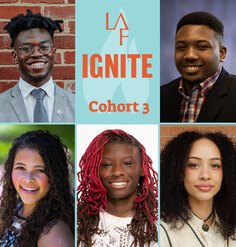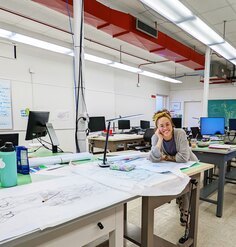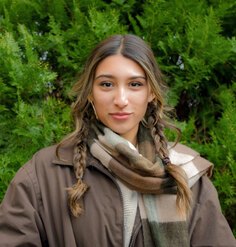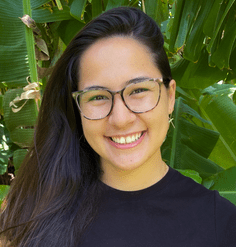Olmsted Scholar Feature: A Landscape Architect in Coal Country
By Marin Braco, 2012 National Olmsted Scholar Finalist
As an undergraduate, I studied art history where I became interested in the field of environmental art. While in school, I had no idea that this interest would land me a job that would involve understanding the geologic formation of coal, learning how to read a map of 600 feet of abandoned mines, and knowing terms like ‘culm’ and the difference between anthracite and bituminous. I was serving as an AmeriCorps volunteer working on a coal mine reclamation project with environmental artist Patricia Johanson in Scranton, Pennsylvania. It was during this experience that I decided that my interests lay beyond the confines of museum walls, and soon after the completion of my term, I applied to graduate school for landscape architecture.
Three years later, I returned to the same branch of AmeriCorps, the Appalachian Coal Country Watershed Team (ACCWT), for my capstone project. Living and working directly with a community in northeastern Ohio, I developed a master plan which aims to convert an abandoned ironworks into a multi-functioning park. At the heart of this 35-acre site are 4 rows of beehive coke ovens, 205 ovens in total, one of the largest installations of its kind in the United States.
During the summer of 2011, I worked in Leetonia, Ohio doing research, site inventory, meeting with community members and professionals, and drawing as a way to document and synthesize the information I gathered. I was able to see the site through a number of lenses, meeting with hydrologists, engineers, geographers, urban foresters, and local historians. One day I walked around the site with an engineer who was able to zoom in on structural details of the site’s infrastructure. The very next day, I went on a two-hour drive with a geography professor, giving me a ‘regional context tour’. As we drove along the steel corridor of Youngstown, he pointed out abandoned mills and lakes that were created in order to supply water for steel-making processes. I also heard memories and stories from community members. Oral history reports completed in the early 1980s were essential to understanding the site from the viewpoint of the people that worked there. I held community meetings throughout the process to share the information I was gathering and to receive input.
Taking inspiration from the work and process of Johanson, my approach to this master plan is founded in placed-based design, drawing on the character of the site and the community that surrounds it. The design seeks to make both historical and ecological processes visible. Drainage across the site will address issues of contamination from both stormwater and acid mine drainage. Ecological management will maintain different stages of succession. Historic processes tell narratives relevant on a national, regional, and also very local level — from the American story of immigration to the regional importance of the iron and steel industry and the strong link between Cherry Valley Coke Ovens and the formation of this town. This project aims to weave into the fabric of the community, allowing small interventions to unfold over time, with continued support from the advisory commission, AmeriCorps volunteers, local universities, and professionals. In doing so, this project has the potential to be a catalyst for the revitalization of the downtown.
I am not the first landscape architect to volunteer with the ACCWT, and I certainly hope I am not the last. By working with AmeriCorps, our skills can extend to communities that may not otherwise have access to such services. At the same time, it gives young designers a chance to develop and grow as they gain experience doing meaningful work. I am fully aware that I may never have the chance to know a site, its history, and community so intimately ever again, and am very grateful for such an opportunity.
Marin recently graduated with a Master of Landscape Architecture from State University of New York - College of Environmental Science and Forestry. If you are interested in learning more about opportunities for landscape architects in the Appalachian Coal Country Watershed Team, you can contact her at mbbraco@gmail.com or vistit the ACCWT website: www.coalcountryteam.org.











